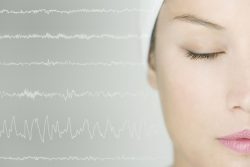 While we sleep there are brain circuits and neuron learning connections that are active. They help us establish differences between items that are unrelated. The ability to remember indirect or arbitrary links between people, objects or events is called relational memory. This is what helps you put names with faces, find your keys or remember to turn off the stove before you leave the house.
While we sleep there are brain circuits and neuron learning connections that are active. They help us establish differences between items that are unrelated. The ability to remember indirect or arbitrary links between people, objects or events is called relational memory. This is what helps you put names with faces, find your keys or remember to turn off the stove before you leave the house.
It has been established that human and animal memory receives benefits from quality and sufficient sleep. New research is showing the hidden mechanisms that create or strengthen new relational memories while you sleep.
The researchers made an artificial model of 2 different areas of the brain. The cortical, which is involved in learning, memory and making decisions, and the thalamic, which has to do with prior sensory processing. The model simulated 2 major states of the brain. The first is awake, when the neurons are automatically optimized and active to generate sensory input. The second is deep sleep, when inherent oscillations of electrical activity is processed, such as waves that are slow.
The network model properties were able to be changed to generate transitions from asleep activity and awake activity comparable to brain activity every day.
In the region that is cortical, the neuron connections were able to become weaker or stronger dependent on their activity. This is called synaptic plasticity, and reflects the primary biological mechanism of the way memories are erased or formed.
The team modeled the cortex following visual processing, with one cortical layer which represented primary visual cortex and another layer which represented associative cortex. Each time one sees the exact object, the same neurons in the cortex that was visual was active. If someone sees two objects in the exact context, then these links might be learned in the cortex that is associative through strengthening connections between neurons that represent the two objects.
The team trained the network in the awake mode to determine direct links, such as A+B or B+C but not A+C, then found that in sleep, the model made indirect associations of A+C.
This occurred because during sleep the neurons which represented all three related items (A, B & C), automatically fired in close order that was temporal. This phenomenon is known as sleep replay and triggers synaptic plasticity and leads to the formation of powerful synaptic connections between all the neurons. This means that following sleep, activating any one of the groups such as A, activated all the other related groups – B and C.
The work is primarily conceptual, but the team states the work has implications that are real world. One that is important in the study is in informing studies of disease in the future – such as autism spectrum disorder and schizophrenia. Studies show that people who have these conditions do worse on relational memory tasks and also have sleep that is disrupted and that is slow wave.
The study has suggested the focus on improving sleep that is slow wave, which would alleviate some of the symptoms that are cognitive and associated with theses conditions, might be a more fruitful forward path rather than focusing exclusively on the cognitive symptoms.
The team notes that sleep quality and memory function do decline with the aging process, however current or even new technologies that augment sleep oscillations might help improve and protect functions of memory in the older population.
To view the original scientific study click below:
Role of Sleep in Formation of Relational Associative Memory





